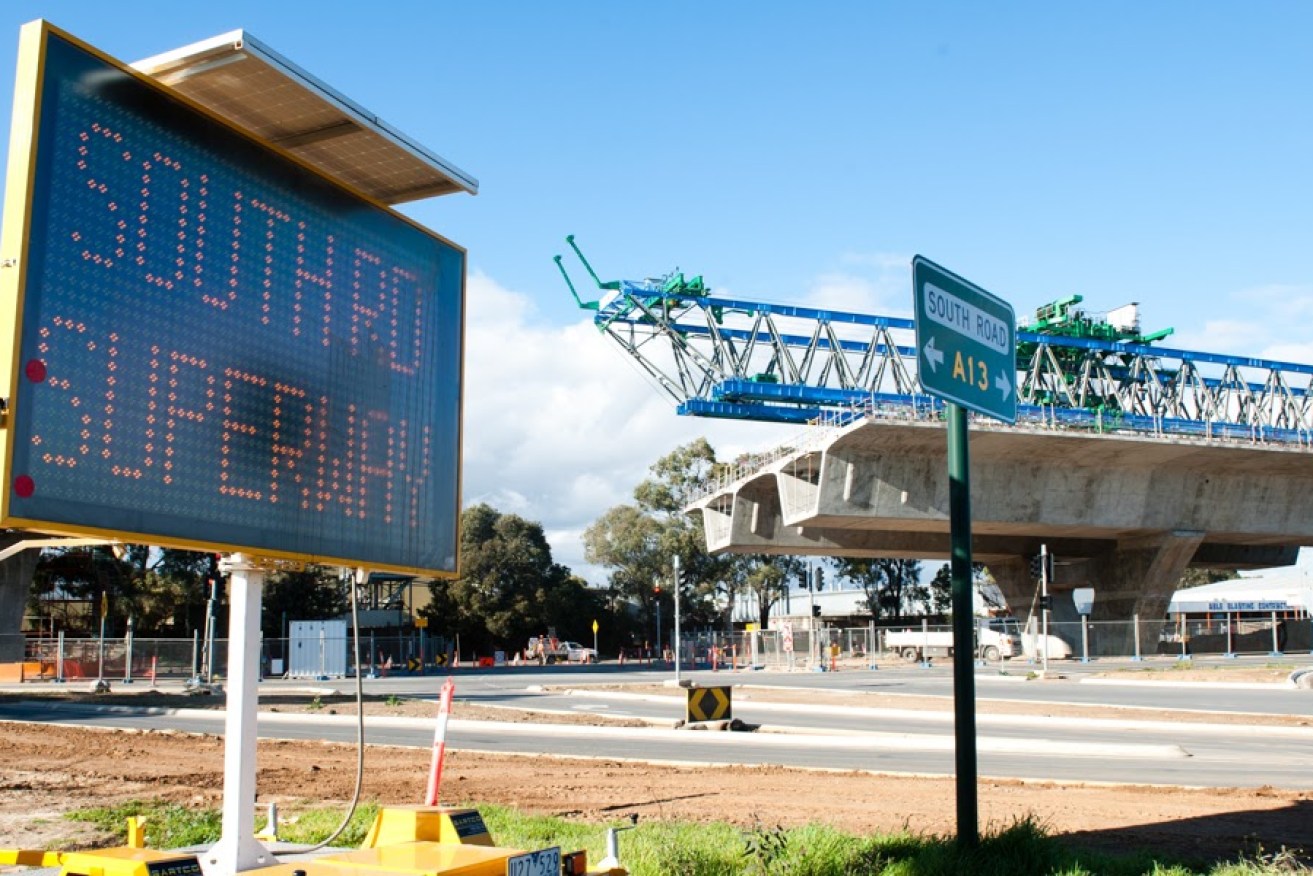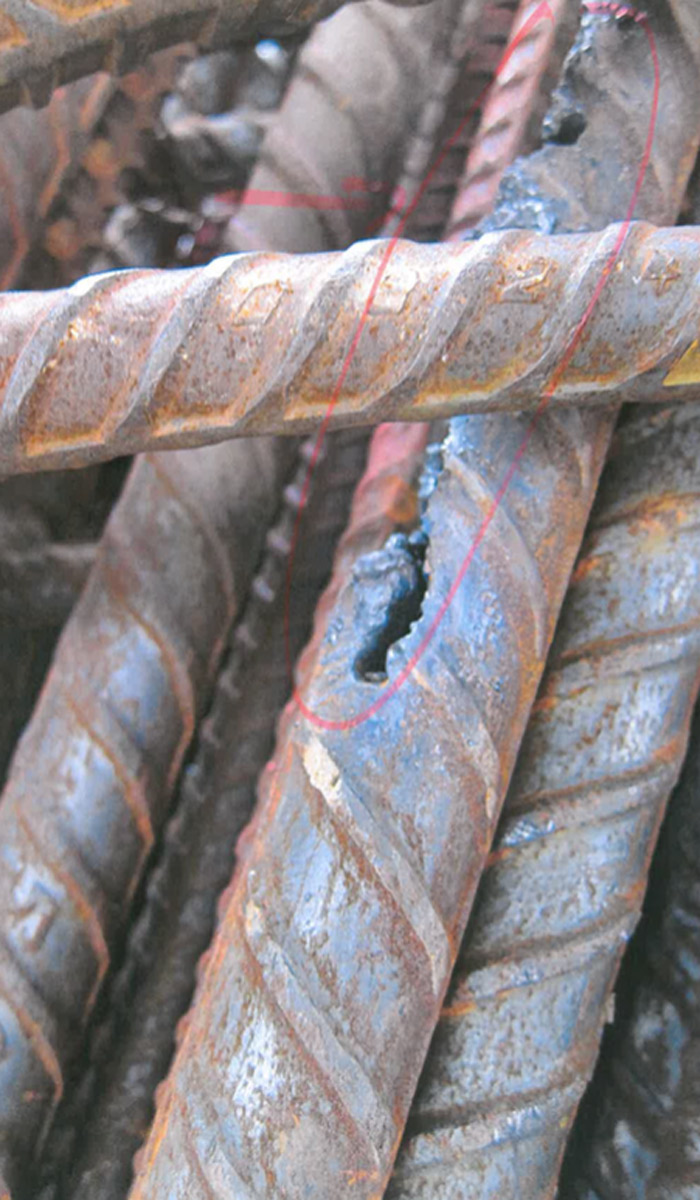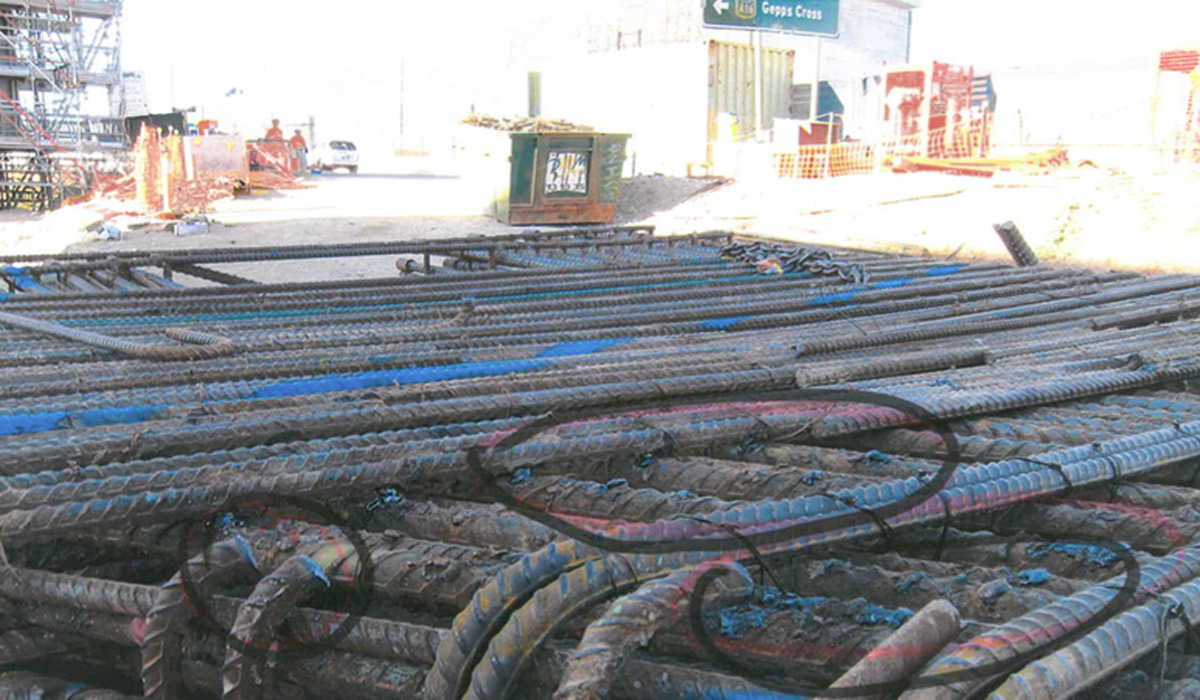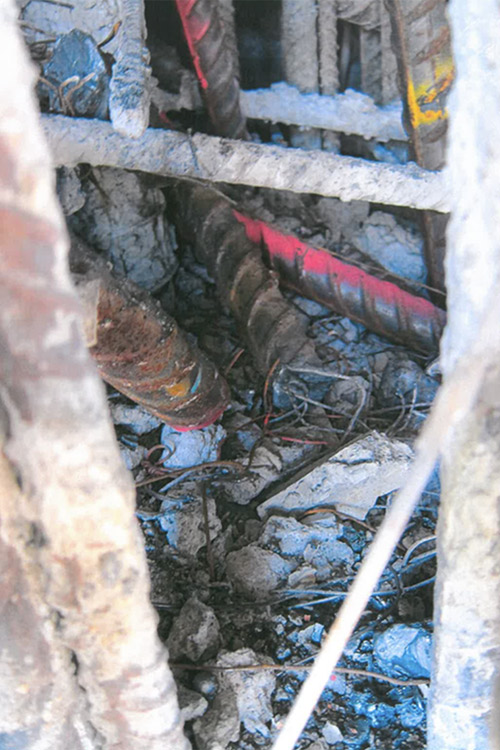Superway build plagued by steel, skills shortages
The construction of the $842 million South Road Superway was hampered by a lack of experienced engineers and reinforcement steel, InDaily can reveal.


South Road Superway during construction in 2012. Photo: Nat Rogers/InDaily.
Opposition Infrastructure spokesperson Tim Whetstone told InDaily that quarterly reports into the Superway construction, produced by the Department of Planning, Transport and Infrastructure (DPTI), showed there had been problems employing enough skilled engineers and obtaining enough reinforcement steel throughout the life of the project.
Last month, an InDaily investigation uncovered allegations that tonnes of reinforcement steel within the concrete piers elevating two kilometres of the roadway may have been structurally compromised because of the use of oxy-acetylene torches to heat and bend it.
Steel fixers who had worked on the site also claimed that hundreds of shear ties, designed to prevent the Superway from collapsing during an earthquake, were not installed intact within the piers.
Whetstone said the shortage of reinforcement steel and engineering expertise flagged in the reports could go some way to explaining the unorthodox heat-bending techniques used on the Superway construction.
He told InDaily the reports warned that “the complexity of the project (was) placing significant demands on skilled resources,” and raised concerns about a “shortage of experienced engineering consultants and skilled construction resources” and problems with “the supply of reinforcement steel and the ability to meet specifications”.
Photographs (below) taken covertly by workers and obtained by InDaily, appear to show steel reinforcement bars from the site missing large chunks of metal.

This photograph, marked with highlighter pen, shows steel reinforcement heated using oxy acetylene, former Superway workers say.
“Anyone that’s had any metallurgy background or any steel forming background would cringe at those photos,” Whetstone, a former professional toolmaker, said.
“What I saw in those photographs raises real issues with the integrity of that steel.
“Once you heat structural chord up over a certain temperature it loses its integrity.”
He said that he was not satisfied by written assurances about the structural integrity of the Superway, given to the committee by DPTI in response to the workers’ allegations.
A DPTI spokesperson told InDaily in December that the Superway was “built to the highest construction standards … structurally sound and 100 per cent safe for people to drive on”.
But the department refused to address specific questions about the construction methods used on the project.
“The taxpayer of South Australia deserves a better explanation, and they need much more assurance than a fuzzy statement to say that that project is all above-board,” said Whetstone.
“Not only is it the integrity of the project, but it is the life expectancy of that project now (under question).
“We need to have witnesses come in.
“When I next meet with the public works committee I will again be recommending that we get witnesses in.”

This photograph, marked with a black marker, shows what former Superway workers say is steel reinforcement bars cut with oxy acetylene torces on site.
Whetstone said he would request that the chief executive of DPTI, Michael Deegan, be called to give evidence to the committee.
“He needs to come in with his engineers (Superway project director) Luigi Rossi … to answer the allegations,” Whetstone said.
“We need to see engineers’ reports into any form of structural … modification that was not (consistent with the original design).”

Former Superway workers claim concrete was poured onto the debris that appears to be shown in this photograph.
He said he would also seek evidence from Dominick Lewis, one of the steel fixers who blew the whistle on the project.
“He should be given the right to come in and (make) his case,” said Whetstone.
“People have the right to hear his concerns as a steel fixer.
“His questions need to be answered.”
Whetstone and his Liberal Party colleague Michael Pengilly are outnumbered in the Public Works Committee by three Government members: Annabel Digance (who is also chairperson) Paul Caica and Dana Wortley.
However, he said he was confident the committee would be “sensible enough” to call witnesses on the subject.
“A letter, for me, is not good enough,” he said.
“I’m expecting that we will be calling witnesses in.”
The Public Works Committee is due to discuss the issue when it meets in February.
DPTI did not provide answers to InDaily’s specific questions, including about the impact of the apparent shortage of steel and experienced engineers on the project.
It did, however, provide the following statement today.
“DPTI is preparing a detailed response to be provided to the Public Works Committee within coming weeks.
“As we previously advised, a rigorous and robust independent verification process is used for any complex project and strict procedures were followed to ensure the structural integrity of the Superway.
“Every stage of the construction was subject to review by the Independent Verifier (AECOM), as was the change management process. Any modifications to design were approved by the designer, and major changes were also reviewed by the Proof Engineer. Pre-pour inspections were jointly conducted by the Contractor, the designer and the Independent Reviewer.
“The site was subject to regular Safety Audits and inspections by SafeWork, Commcare and the Independent Verifier.”




